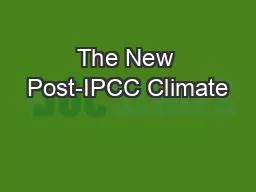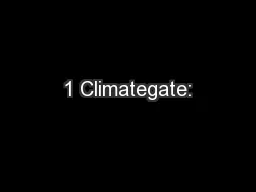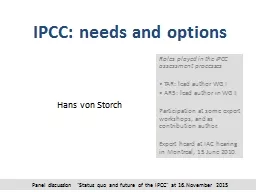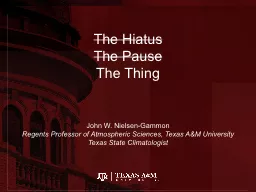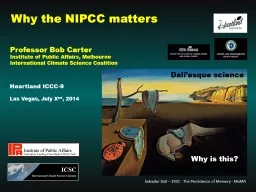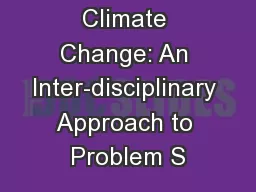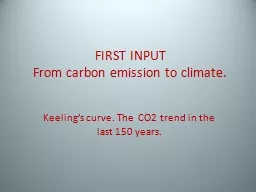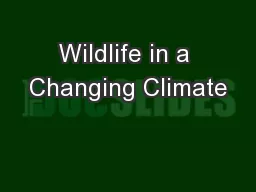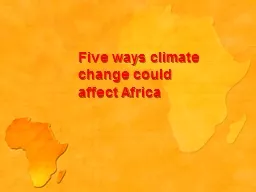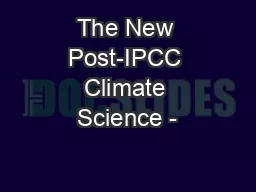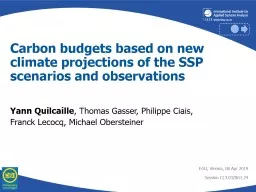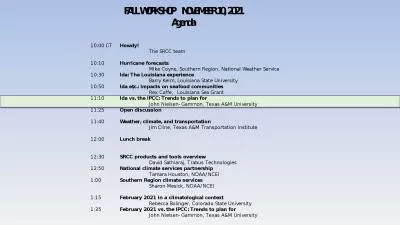PPT-The New Post-IPCC Climate
Author : v2nant | Published Date : 2020-07-04
Science A Darker Frame for our Options and Our Future Richard Nolthenius PhD Astronomy Dept Chair Cabrillo College CA Relevant Background MS in Aerospace 76
Presentation Embed Code
Download Presentation
Download Presentation The PPT/PDF document "The New Post-IPCC Climate" is the property of its rightful owner. Permission is granted to download and print the materials on this website for personal, non-commercial use only, and to display it on your personal computer provided you do not modify the materials and that you retain all copyright notices contained in the materials. By downloading content from our website, you accept the terms of this agreement.
The New Post-IPCC Climate: Transcript
Download Rules Of Document
"The New Post-IPCC Climate"The content belongs to its owner. You may download and print it for personal use, without modification, and keep all copyright notices. By downloading, you agree to these terms.
Related Documents

